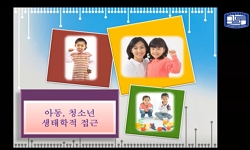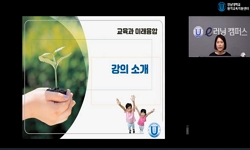목 적 : 소아의 미세변화형 신증후군은 원발성 신증후군의 $85\%$이상을 차지하며, 스테로이드 치료로 완전관해가 잘오는 예후가 양호한 질환이다. 그러나 이와 같은 미세변화형 신증후군의 ...
http://chineseinput.net/에서 pinyin(병음)방식으로 중국어를 변환할 수 있습니다.
변환된 중국어를 복사하여 사용하시면 됩니다.
- 中文 을 입력하시려면 zhongwen을 입력하시고 space를누르시면됩니다.
- 北京 을 입력하시려면 beijing을 입력하시고 space를 누르시면 됩니다.

청소년기와 소아기 미세변화형 신증후군의 임상양상에 대한 비교연구 = Comparison of Adolescent Minimal Change Nephrotic Syndrome with Childhood Minimal Change Nephrotic Syndrome
한글로보기https://www.riss.kr/link?id=A101470384
-
저자
최정윤 ; 김지홍 ; 김병길 ; Choi, Chung-Yun ; Kim, Ji-Hong ; Kim, Pyung-Kil
- 발행기관
- 학술지명
- 권호사항
-
발행연도
1999
-
작성언어
Korean
- 주제어
-
등재정보
KCI등재후보
-
자료형태
학술저널
- 발행기관 URL
-
수록면
11-19(9쪽)
- 제공처
-
0
상세조회 -
0
다운로드
부가정보
국문 초록 (Abstract)
목 적 : 소아의 미세변화형 신증후군은 원발성 신증후군의 $85\%$이상을 차지하며, 스테로이드 치료로 완전관해가 잘오는 예후가 양호한 질환이다. 그러나 이와 같은 미세변화형 신증후군의 전형적 임상양상은 2-10세에서 주로 나타나며 임상증상과 치료반응이 발병연령이 증가하면서 변화를 보이는데 성인기에는 원발성 신증후군중 비교적 낮은 빈도를 보이며 소아기에 비해 치료에 대한 예후가 불량한 것으로 알려져 있다. 따라서, 본 연구에서는 소아기와 청소년기 미세변화형 신증후군의 임상양상의 차이를 비교하여 청소년기 미세변화 신증후군 환자의 치료에 도움이 되고자 하였다. 방 법 : 미세변화형 신증후군으로 치료받은 216명의 환아를 대상으로 발병연령에 따라 12세미만인 환아군(소아군) 188명과 12세이상 18세미만인 환아군(청소년군)28명으로 구분하여 두 군간의 임상양상의 차이를 비교하였다. 결 과 : 1) 대상기간중 전체 원발성 신증후군은 소아군이 245명, 청소년군이 55명으로 총 300례 였다. 소아군에서는 MCNS 188명($77\%$), FSGS 30명($12\%$), MsPGN 4명($1.6\%$)이었고, 청소년군에서는 MCNS 28명($51\%$), FSGS 12명($22\%$)으로 두 군에서 청소년군에서 MCNS의 빈도가 감소한 반면 FSGS의 빈도는 증가하였다. 2) 평균발병연령은 소아군이 $4.7{\pm}2.7$세, 청소년군이 $14.7{\pm}2.0$세였고 두 군간의 남녀비는 소아군 3.8:1, 청소년군 2.5:1로 차이가 없었다. 3) 혈뇨가 동반된 경우는 소아군 $17\%$, 청소년군 $39.3\%$로 유의한 차이가 있었고(P=0.005),고혈압은 각각 $0.5\%,\;7\%$로 차이가 있었으나 통계학적으로는 의미있는 차이를 보이지는 않았다. 4) 검사소견상 발병당시 24시간 뇨단백량, SPI, albumin, BUN, cholesterol치는 두 군간에 유의한 차이가 없었다. 5) 소아군의 $11.7\%$, 청소년군의 $14.7\%$가 초기 스테로이드 치료로 재발없이 관해가 유지되었으며, 빈발재발형은 각각 $23.9\%,\;14.7\%$, 스테로이드 의존형은 각각 $21.8\%,\;28.6\%$. 스테로이드 저항형은 각각 $13.3\%,\;14.7\%$로 나타났으나 의미 있는 차이는 없었다. 6) 스테로이드 이외의 면역 억제제가 필요했던 경우는 소아군은 $57\%$, 청소년군은 $65\%$였다. 7) 평균재발횟수($0.8{\pm}0.84$회/6개월 Vs $0.8{\pm}0.79$회/6개월) 및 관해에서 첫 재발까지의 기간은($7.7{\pm}8.4$개월 Vs $4.9{\pm}5.8$개월) 두 군간에 의미 있는 차이는 없었다. 결 론 : 소아 미세변화형 신증후군의 임상양상의 비교에서 혈뇨의 빈도는 청소년 환자군에서 의미 있게 높았다. 스테로이드 의존형과 빈발재발형의 비율, 재발의 빈도는 청소년환자군에서 비교적 높게 나타나 치료에 대한 반응성이 떨어지는 양상을 보이므로 청소년기 미세변화형 치료에 있어서 이러한 문제들이 인식되어야 하고 보다 적극적인 면역억제제의 선택이 고려되어야 할 것이다.
다국어 초록 (Multilingual Abstract)
Purpose: MCNS is found in approximately $85\%$ of the idiopathic nephrotic syndrome in children and shows good prognosis with initial steroid therapy. MCNS most commonly appears between the ages of 2 and 10 yr. But the incidence and prognosis in adole...
Purpose: MCNS is found in approximately $85\%$ of the idiopathic nephrotic syndrome in children and shows good prognosis with initial steroid therapy. MCNS most commonly appears between the ages of 2 and 10 yr. But the incidence and prognosis in adolescent MCNS are different from those found in young children; the prognosis and the response to therapy is unfavorable with increasing ages. So we compared the prevalence and the clinical manifestations of adolescent MCNS with that of childhood MCNS for management of adolescent MCNS. Methods: We conducted a retrospective study with a review of histopathologic findings and clinical manifestations of the 216 cases with MCNS which were divided into children group and adolescent group by their age of onset; under 12 years(childhood) and between 12-18 years(adolescent). Results: 1) The number of childhood idiopathic nephrotic syndrome was 245 cases, and that of adolescent idiopathic nephrotic syndrome was 55 cases. 188 cases($77\%$) showed MCNS, 30 cases($12\%$) FSGS, 4 cases($1.6\%$) MSPCN in childhood idiopathic nephrotic syndrome; 28 cases($51\%$) showed MCNS, 12 cases($22\%$) FSGS in adolescent idiopathic nephrotic syndrome. 2) The mean onset age was $7.53{\pm}5.5$ years, and the male to female ratio was 3.8:1 in childhood onset and 2.5:1 in adolescent onset with male predominance. 3) Hematuria was associated with $17\%$ of childhood onset and $39.3\%$ of adolescent onset disease(P=0.005). Hypertension appeared in $0.5\%\;and\;7\%$ in each group without significant difference between the groups. 4) 24 hour urine protein, SPI, albumin, BUN, cholesterol level showed no significant difference. 5) The response of childhood onset and adolescent onset MCNS to steroid therapy showed complete remission in $11.7\%\;&\;14.7\%$, infrequent relapsing in $29.2\%\;&\;28.5\%$, frequent relapsing in $23.9\%\;&\;14.7\%$, steroid dependent in $21.8\%\;&\;28.6\%$ each. Steroid resistant showed $13.3\%\;&\;14.7\%$ with no significance. 6) Immunosuppresant therapy was performed $57\%$ in childhood onset and $65\%$ in adolescent onset. 7) Mean number of relapse and duration from onset to first relapse showed no significance between two groups. Conclusion : Our results indicate that the incidence of hematuria, the rate of steroid dependent and frequent relapsing, and the recurrence rate were higher in adolescent MCNS; showed poorer steroid responsiveness and prognosis. Our data also point to the need for a more aggressive therapy to treat and make recommendations for the adolescent population as a whole.
동일학술지(권/호) 다른 논문
-
전국 병원을 대상으로 조사한 소아 특발성 신증후군의 임상적 고찰 - 다기관 공동연구 결과보고 -
- 대한소아신장학회
- 조병수
- 1999
- KCI등재후보
-
반복적 부동화 스트레스가 흰쥐 신장의 말초성 benzodiazepine 수용체에 미치는 영향
- 대한소아신장학회
- 박용훈
- 1999
- KCI등재후보
-
소아의 미세변화형 신증후군 및 초점성 분절성 사구체 경화증 환아에서 혈청 및 요의 용해성 인터루킨-2수용체
- 대한소아신장학회
- 하일수
- 1999
- KCI등재후보
-
Puromycin Aminonucleoside 투여로 초래된 백서신증에 $\alpha$-tocopherol이 미치는 영향
- 대한소아신장학회
- 서형호
- 1999
- KCI등재후보




 ScienceON
ScienceON





